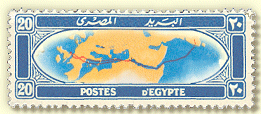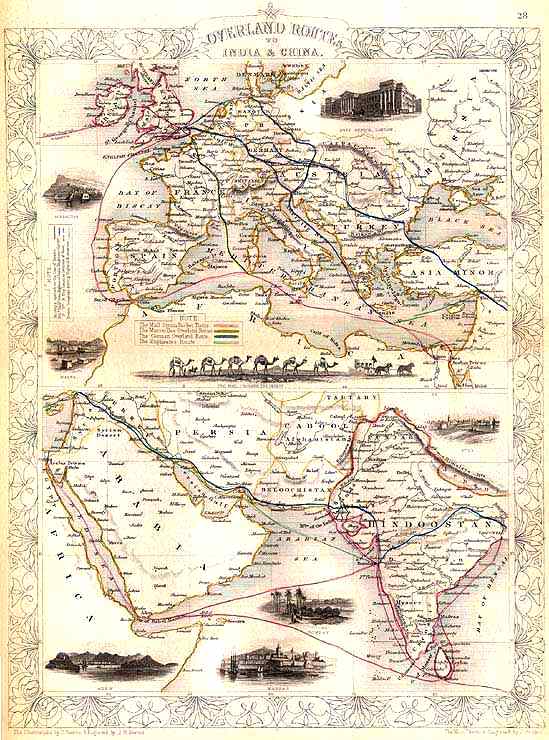

| The overland mail can mean many things to philatelists, with perhaps the Butterfield Overland Express of Texas being the one which most
readily comes to mind. To students of Egyptian philately, however, it has come to mean the mails carried from Alexandria to Suez or vice versa during the
mid-19th-century as part of the transit between Europe and India and places east of Suez. The area mainly researched and written about is the service operated by
Thomas Waghorn from 1837 to 1842, with around 200 covers recorded (records differ between different authors). Some may consider the Waghorn markings not to be part
of Egyptian philately since not a single one of them was applied in Egypt, but nevertheless they are found in Egyptian exhibits and collections. Some 14 markings
have been recorded by Sidebottom, Hill and others, comprising either two or three lines, some of them boxed or within an oval. Also of interest to Egyptian philatelists are the other companies that offered a similar postal service at the same time as Waghorn or after he had abandoned his enterprise. Of the many, possibly 25-plus, forwarding agents or companies that operated a few had their own cachets bur these are extremely rare. Known from only a few examples are the Egyptian Transit Company, Samuel Shepheard and Briggs and Co. |
 |
Waghorn died soon after at home in England a broken man and it was not until some time after was his contributions recognized. See WAGHORN ARCHIVE |
 "Overland Routes to India and China," steel engraving by John Tallis, published 1851; |
|
BIBLIOGRAPHY Egypt, Stamps and Postal History Peter A.S. Smith, 1999 The Overland Mail John K.Sidebottom, 1948 Postal History of Egypt to 1900 Samir A. Fikry, 1996 Links Waghorn Booklet Googlebooks. |
|
|